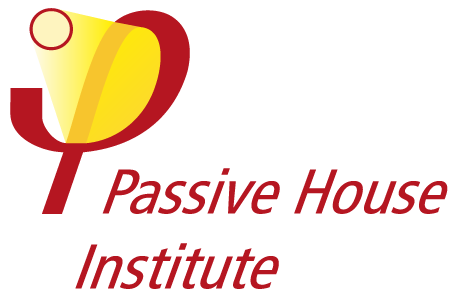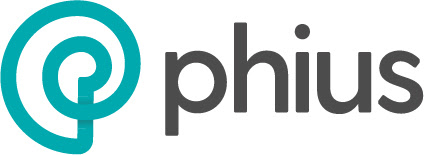Certification Training FAQ
So, you’ve made the smart* decision to become a Passive House professional…
* forward-thinking, trend-setting, career-boosting, energy-conserving
75% Cost Reimbursement for Accredited Training
Where to start?
Why are there two?
Does one credential work for both building standards?
Which to choose?
How do I become a Passive House professional?
Which credential?
Which training path?
What are the courses like?
Not a designer or builder, but still want to be a Passive House professional?
How much will it cost?
Where to start?
There are two Passive House entities: Passive House Institute (“PHI”) and Phius, formerly known as Passive House Institute U.S (“PHIUS”). Both are non-profit member organizations.
Why are there two?
The building standard we know today started in Germany with Dr. Wolfgang Feist, a German physicist, and Dr. Bo Adamson, a Swedish scientist, developing the principles and techniques for “passivhaus” to achieve very low heating consumption. Feist later founded the Passive House Institute (PHI) in Darmstadt in 1996 after a pilot project – the Kranichstein Passive House – of a multi-family house. Since then, the standard has evolved, and there are Passive Houses on at least 5 continents, the majority in Europe.
The Passive House Network (PHN), formerly known as NAPHN, is an iPHA affiliate of Passive House Institute (PHI) and supports and practices the PHI standard in the US.
Phius (initially known as Passive House Institute U.S or PHIUS) is a leading certifier of passive house projects, trains architects and builders, and conducts advanced building science research. Phius was founded to combat climate change by making passive building practices the mainstream market standard. Phius developed the first climate-specific, cost-optimized passive house standard in 2015. Although it was initially designed for North America, the Phius standard can be applied in climate zones throughout the world. It adjusts targets to the “sweet spot” in each zone that represents maximum conservation at practical cost.
Does one credential work for both building standards?
No. PHI and Phius are separate entities. E.g., a PHI-certified CPHD cannot apply for a Phius project certification.
Which to choose?
Both are great organizations. Both offer comparable training and certifications. Phius focuses on North America, while PHI is international. Ask other certified Passive House professionals to learn why they chose one over the other.
How do I become a Passive House professional?
PHI Certified Passive House Designer/Consultant (CPHD/C)
– Either pass an exam or design a certified Passive House.
PHI Certified Passive House Tradesperson (CPHT)
– Pass an exam
Phius Certified Passive House Consultant (CPHC®)
Phius Certified Passive House Builder (CPHB)
Phius Certified Rater
Phius Certified Verifier
– Pass an exam
Which credential?
If you are an architect or engineer, or similar building professional, become a PHI Certified Passive House Designer or a Phius CPHC® (Certified Passive House Consultant)
If you are a designer (i.e. you do not hold an architecture degree) or non-specialized professional, become a PHI Certified Passive House Consultant or a Phius CPHC® (Certified Passive House Consultant).
If you’re a builder, become a Phius Certified Passive House Builder or a PHI Certified Passive House Tradesperson.
If you’re a tradesperson, become a PHI Certified Passive House Tradesperson or a Phius Certified Passive House Builder.
Which training path?
Once you determine whether to align with PHI or Phius, and which credential is appropriate for you, sign up for training (if you aren’t taking the practical route).
See our Training Channels page for providers. Most training courses offer AIA CEUs; some include BPI, CPHC, etc.
What are the courses like?
PHI courses have live-online and on-demand options:
• Certified Passive House Designer/Consultant training duration varies from a few days of live instruction + online modules (live-online) to self-paced 10-12 week courses (on demand); in-person exams occur four times each year globally or PHN offers them in conjunction with their training
• Certified Passive House Tradesperson on-demand: online units with Q&A sessions for each unit; approximately three exams held per year.
Phius courses have two phases:
Phase I (complete prior to Phase II): Online, independent preparation:
• CPHC® (Certified Passive House Consultant) – allow 4-6 weeks to view pre-recorded videos
• Certified Passive House Builder – 8-hour prep course
Phase II: Live instruction (virtual or in-person) for
• Certified Passive House Consultant – 8 days, 3 hours per day over two weeks
• Certified Passive House Builder – 8 days, 3 hours per day over two weeks
Not a designer or builder, but still want to be a Passive House professional?
Become a rater or verifier. Both PHI and Phius require third-party testing for quality assurance and building certification. You can become a PHI Passive House Certifier, a PHIUS+ Rater (single-family residential), or a PHIUS+ Verifier (large-scale multi-family and commercial).
This looks expensive.
The sponsors of Energize Connecticut are offering a 75% cost reimbursement for Passive House Institute (PHI) or Phius professional accreditation trainings for consultants, builders, architects, tradespersons, raters and verifiers. Eligible upon successful accreditation (i.e. passing the exam) through PHI or Phius.
Learn more about the Passive House & All Electric Homes Initiative.
Ask your employer to invest the other 75% in you:
• Passive House is at the core of where our future built environment needs to go.
• Puts your workforce at the forefront of sustainable design.
• Having Passive House expertise within your practice is a clear demonstration of a commitment to energy efficiency, fuel poverty reduction, and taking action on climate change.
• Learn skills to achieve carbon footprint reduction and zero energy design.
• Passive House is a proven mechanism for achieving construction quality and low-energy design.
• It’s a standard that helps ensure you get what you pay for, which is very attractive to clients.
• There are specific client bases for Passive House; it is a niche market to tap.
• Understanding of building science and how that knowledge can be used to provide clients with a superior overall product, Passive House or not.
• Based on the rate of Passive House projects winning design awards, including Passing House design principles into projects is perceived as “raising the bar” on high performance.
• Passive House is where the industry is headed. Having certified Passive House professionals on board indicates leadership in the industry, and preparedness to meet clients’ expectations.
• If your Connecticut-based firm doesn’t have someone on staff who is familiar or trained in Passive House, you risk falling behind.


